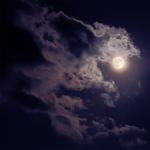Tell you what the main characters look like new year holidays V different countries peace.
Tovlis babua (Georgia)
Tovlis babua is translated from Georgian as "snow grandfather". This is a gray-haired old man with a long beard. He is dressed in a black or white chokha with a white nabadi cloak, and he has a traditional Svan hat on his head. Tovlis babua brings gifts to children in a big sack "khurjini".Santa Claus (Russia)
© photo: Sputnik / Evgeny Biyatov
In his hands, Santa Claus holds a crystal staff with a bull's head - a symbol of fertility and happiness. He rides in a painted sleigh pulled by a trio of snow-white horses. Fairy tale hero accompanied by his granddaughter - Snegurochka.
Santa Claus (USA, Canada, Australia, Western Europe)

© photo: Sputnik / Maxim Bogodvid
Santa Claus is not dressed in a fur coat, but in a short red jacket. He has a red cap on his head, and the same glasses on his nose. Santa rides across the sky on a sleigh pulled by deer, with a retinue of elves and gifts. Santa Claus places gifts for children under the Christmas tree, as well as in socks helpfully hung over the fireplace. Santa enters the house through the chimney.
Yollupukki (Finland)

© photo: Sputnik / Pavel Lisitsyn
Yollupukki long hair, he wears a tall cone-shaped hat and red clothes. He is surrounded by gnomes in pointed caps and capes with white fur. Yollupukki's hut stands on a mountain. His wife Muori and gnomes live in it. Finnish Santa Claus wears a goatskin jacket with a leather belt and a red cap.
Jõuluvana (Estonia)

© photo: Sputnik / Vadim Zhernov
Jõuluvana is similar to his Finnish relative Joulupukki: long gray hair, a snow-white beard, a red sheepskin coat and a cone-shaped cap with a pompom. He does not dress up in a goat's skin, but he has a reindeer, as well as helpers - gnomes. And Yyuluvan's wife is Mother Winter.
Sinter Klaas (Holland)

© AFP / REMKO DE WAAL
Sintaklaas is an old man with a white beard and hair, in a red robe and miter, riding a white horse. He has a large book that describes gifts for all children, their names and addresses. Sintaklaas arrives on a ship accompanied by black servants.
Pere Noel and Saint Schaland (France)

© AFP / MYCHELE DANIAU
There are two Santa Clauses in France. One is called Per-Noel. He is kind and brings gifts to the children in a basket. The second Santa Claus is called Shaland - this is a bearded old man who wears a fur hat and a warm traveling raincoat. Hidden in his basket are rods for naughty and lazy children.
Kahand Pap (Armenia)

© photo: Sputnik / Asatur Yesayants
The Armenian Santa Claus is surrounded by fabulous creatures: Khlvliks - noisy and active little men and Aralez - half animals, half people. Kahand Pap goes to congratulate the children on their granddaughter Dzyunanushik.
Korbobo (Uzbekistan)

© photo: Sputnik / Roman Khasaev
He is dressed in a striped robe made of national fabric and a festive red skullcap. Corbobo is accompanied by his granddaughter Korkis. He uses a small donkey as transport.
Zyuzya (Belarus)
Depicted as a bald grandfather of small stature, with a long gray beard. He walks barefoot, without a hat, in a white casing. In his hand is an iron mace. His breath is a strong chill. His tears are icicles. Hoarfrost - frozen words. And her hair is snow clouds. He really does not like those who complain about the cold. © AP Photo / Vadim Ghirda
Romanian teacher dressed as Santa Claus in Bucharest
Mosh Krachun wears a mustache and beard. He is dressed in a red sheepskin coat just below the knees with the corresponding ornament of ancient times, behind his shoulders is a bag called desaga. And all this is done with national ornaments. Mosh Krechun is wearing a sheepskin coat on his head, and instead of felt boots there are postols on his feet. He is accompanied by the characters of national fairy tales - Guguts and Fulguts.
Soon New Year will knock on the door of every house ... More precisely, Santa Claus will knock ... Or maybe it will be cute brownies in knitted caps ?! Or the beautiful fairy Befana?! We need to figure out who to expect on New Year's Eve.
Here's what they are, these Santa Clauses and Snow Maidens:
- Australia, USA - Santa Claus. The American grandfather wears a cap and red jacket, smokes a pipe, travels through the air on reindeer, and enters the house through a pipe. Australian Santa Claus is the same, only in swimming trunks and on a scooter (you know, it's hot on the first of January in the country of kangaroos :-).
- Austria - Sylvester
- Altai Territory — Sook-Taadak
- England - Father Christmas
- Belgium, Poland - St. Nicholas. According to legend, he left golden apples in a slipper in front of the fireplace to his family. It was a very long time ago, so St. Nicholas is considered the very first Santa Claus. He rides a horse, wearing a miter and a white episcopal robe. He is always accompanied by the Moor servant Black Peter, who carries a bag with gifts for obedient children behind his back, and in his hands - rods for naughty people.
- Greece, Cyprus - Saint Basil
- Denmark - Ületomte, Ülemanden, Saint Nicholas
- Western Slavs - Saints Mikalaus
- Italy - Babo Nattale. In addition to him, the good fairy Befana (La Befana) comes to obedient children and gives gifts. The naughty people get a piece of coal from the evil sorceress Befana.
- Spain - Papa Noel
- Kazakhstan - Ayaz-ata
- Kalmykia - Zul
- Cambodia - Ded Zhar
- Karelia — Pakkainen
- China - Sho Hing, Sheng Dan Laozhen
- Columbia - Pascual
- Mongolia - Uvlin Uvgun, accompanied by Zazan Ohin (Snow Maiden) and Shin Zhila (boy-New Year). New Year in Mongolia coincides with the festival of cattle breeding, so Santa Claus wears the clothes of a cattle breeder.
- Netherlands - Sanderklaas
- Norway - Nisse (small brownies). Nisse wear knitted caps and love tasty things.)
- Russia - Father Frost, Father Treskun, Morozko and Karachun rolled into one. He looks a little stern. He wears a fur coat to the ground and a high hat, in his hands he has an ice staff and a bag of gifts.
- Romania - Mosh Jerile
- Savoy - Saint Schaland
- Uzbekistan - Korbobo and Korgyz (Snow Maiden). In the Uzbek villages on New Year's Eve, a "snow grandfather" in a striped robe rides a donkey. This is Corbobo.
- Finland - Joulupukki. This name was not given to him in vain: “Youlu” means Christmas, and “pukki” means a goat. Many years ago, Santa Claus wore a goat skin and delivered gifts on a goat.
- France - Grandfather January, Pere Noel. The French "Father January" walks with a staff and wears a wide-brimmed hat.
- Czech Republic - Grandfather Mikulas
- Sweden - Kris Kringl, Yulnissan, Yul Tomten (Yolotomten)
- Japan - Oji-san
All Santa Clauses bring gifts, but everyone does it in their own way:
- Russian Santa Claus puts a gift under the Christmas tree.
- The British and Irish find gifts in the sock, and the Mexicans in the shoe.
- New Year's gifts are thrown down the chimney in France, and onto the balcony in Spain.
- In Sweden, Santa Claus puts gifts on the stove, and in Germany leaves them on the windowsill.
Santa Claus - they are all so different. They look different, one is kind, and the other can scold. Everyone has their own personal way to sneak into the holiday home.
But whatever Santa Claus you are, you are there to congratulate and give a gift!
In our country, they began to celebrate not so long ago, less than 100 years ago. Before that, it was Christmas: with chants, carols and angels on the Christmas trees. But something has remained unchanged. And on New Year's Eve and on Christmas Eve, the same mysterious guest came to the children - Santa Claus. No one ever sees him, but in the morning under the Christmas tree, wonderful gifts await the kids. Santa Claus's colleagues in different countries do the same.
Where did Santa Claus come from?
Oddly enough, this character has nothing to do with the religious, Christian motives of the holiday. This is the embodiment of the winter cold, the pagan deity of cold and frost. A short, gray-haired old man in a sheepskin coat, who taps with a staff, and a wooden crackle is carried in the winter air. According to popular beliefs, if it was especially frosty, then the harvest should have been good. Therefore, for Santa Claus, bowls with treats were put on the windowsills - ritual kutya and pancakes. These are the dishes that served for the winter, which the Slavs have always associated with the afterlife. Such a connection with pagan traditions is not uncommon. It is not so important what the name of Santa Claus is in different countries. Almost everywhere this character comes from gray-haired paganism.
Then Santa Claus did not give any gifts to anyone. It was a deity severe and formidable, but fair. It was Morozko - he is Father Frost - in fairy tales who presented good characters and punished the evil ones. At first, this motif migrated from folk motifs to literature, the writers drew attention to the colorful character. By the 19th century, it was already quite a recognizable type.
The birth of a character
At the same time, active attempts were made in the country to adopt Western Christmas traditions and create their own analogue of a good winter wizard. They were interested in how Santa Claus is called in different countries, various options were considered. St. Nicholas, Grandfather Nicholas and even more familiar to the Slavic ear Morozko were offered. But Santa Claus turned out to be the most successful in the role of a good winter wizard. He was loved by both children and adults. At the same time, a traditional image was formed: an old man in a bright, fur-trimmed sheepskin coat, a hat and felt boots. In the hands of everyone familiar Santa Claus holds a long magic staff. Later, the wizard had a companion - the granddaughter of the Snow Maiden.

But what about in other countries?
Such a character is also present in the mythology of other countries. This is not always an old man, sometimes not even a person at all. God is a good wizard. The appearance of such creatures is very bizarre. It is quite possible that when Santa Clauses from different countries met, they would not even be able to recognize each other. Yes, traditions are very different. Somewhere wizards gave gifts to good children, somewhere else they punished naughty ones. There are countries in which two guests come to the kids on a holiday - a good one and an evil one. The first gives gifts, and the second, if the child behaved badly, scares him or punishes him. For this, the harsh winter spirit usually had real rods in store.
Now let's discuss how Santa Claus is called in different countries of the world and what he looks like.
Everyone knows Santa Claus
A plump old man with a short, fluffy white beard. Red caftan, red cap with fur trim. Santa Claus - that's what Santa Claus is called in different countries - from Britain to America, from Australia to Canada. Every Christmas he arrives in a magical sleigh pulled by reindeer and brings presents to the children. The prototype of this kind old man was After all, Santa is a “saint”, and Klaus is one of the forms of the name “Nikolai”. When the Santa Claus familiar to the whole world did not yet exist, it was he who brought sweets and small gifts to children on December 5 and hid them in a sock left on the fireplace or under a pillow. The Dutch, who honored St. Nicholas and were very fond of the holiday dedicated to him, brought this tradition to America. She took root, and soon many children on Christmas night were waiting for the mysterious wizard Santa Claus, who would certainly bring gifts to everyone.

Finland
The way Santa Claus is called in different countries sometimes sounds quite funny to the ears of Russians. For example, in Finland, a magical creature that fulfills the cherished desires of children is called Joulupukki. In translation, this means nothing less than "Christmas goat." True, in Finland this phrase does not have any offensive or ambiguous connotation. The fact is that for Christmas they made a straw effigy of a goat - just as in Russia they see off the winter with a effigy of Maslenitsa. And the meaning of this action is the same - a pagan ritual, which should ensure a good harvest next year. But in Finland, it is a goat-like creature, similar to the ancient Greek fauns and satyrs, that acts as the deity of fertility. This is where the tradition of giving Joulupukki such a strange nickname comes from. Sometimes he is even depicted with small horns on his head. So, speaking about the names of Santa Claus in different countries, one cannot smile at the thought that sometimes he turns out to be not only a good wizard, but also a little artiodactyl.

Previously, in Finnish villages, guys dressed in fur-turned sheepskin coats and put on a goat mask - the same tradition is present in Slavic Christmas traditions. But in Russia, mummers usually just carol and wish their owners health and wealth. In Finland, such guys dressed in a pagan spirit still gave gifts to obedient children, and frightened the naughty ones and promised to spank them.
Italy
Talking about how Santa Claus is called in different countries of the world, one cannot fail to mention Italy. There, unlike most traditional Christmas characters, the Befana fairy gives gifts to children. No, there is also Santa Claus there. His name is Babbo Natale. And the witch-like fairy Befana brings sweets to the kids not on Christmas itself, but on January 6, this is the day of honoring Saint Epiphany. For those who behaved well, she puts chocolates and sweets under the pillow, and for naughty ones she stuffs the socks with pieces of coal. Fairy Befana looks pretty funny - like a real witch. Hooked nose, and black clothes. According to legend, the fairy Befana was once an evil witch. But, having learned about the birth of Jesus, she decided to give up black magic. She met the Magi and wanted to go with them to Bethlehem. But they did not take poor Befana with them. Instead, she was assigned to roam the world and give gifts to obedient children, punishing naughty ones. So there are many options for how Santa Claus is called in different countries. And only in Italy it is an evil witch who decided to become good.

Japan
Each country has its own traditions. At first, they may seem strange, unusual and even funny - but Santa Claus and the Snow Maiden will seem funny to someone in the same way. In Japan, for example, there are as many as two characters associated with Speaking about how Santa Claus is called in different countries, it is difficult to immediately figure out what to say about the Land of the Rising Sun. There is both the canonical Segatsu-san and the newfangled Oji-san. This is the result of a mixture of national traditions and the influence of mass culture.
Two Spirits of the New Year
Segatsu-san is an ancient symbol of the New Year. He goes from house to house for a whole week, congratulating the Japanese on the holiday and giving them good luck and wealth. All seven days are considered holidays, at which time traditional New Year's delicacies are served on the table, and children dress in their best clothes. For Segatsu-san, special bamboo gates were placed, decorated with pine branches. Through them he had to enter the house. Perhaps, when talking about how Santa Claus is called in different countries, Segatsu-san should be mentioned. After all, it is he who is the traditional spirit of the Japanese New Year. True, he does not give gifts to anyone.

Oji-san is an obvious result of Western influence. He is very similar to Santa Claus, and also pampers the kids. in common with traditional Japanese culture Oji-san has little, but the children love him - after all, it is he who distributes gifts, not limited only to congratulations and good luck wishes.
Our favorite fairy-tale character Santa Claus has been familiar to everyone since childhood. It is he who brings gifts and leaves them on New Year's Eve under the tree.
Everyone knows that our Grandfather is not alone, he has colleagues abroad. For example, Santa Claus. Santa is the most famous colleague of our Morozko. We can say that this is the western Santa Claus.
Perhaps someone else knows about, but what about the rest? Our Slavic Grandfather has many colleagues abroad. Moreover, almost every country has its own Santa Claus and all of them are also very loved by children, just like we are ours.
What is Santa Claus called in different countries of the world? Now we will answer this question and try to get to know each of them a little.
Well, let's get started, our New Year's wizard "according to his passport" is also called Moroz Ivanovich or affectionately Morozko. Now let's start to figure out what is the name of Santa Claus in different countries of the world.
We give you a list of countries and the names of Santa Claus in each of them. The spelling of the names is given (almost everywhere) in Latin letters, and then in brackets is its approximate pronunciation in Russian.
Azerbaijan- ?axta Baba (Baba Mine)
Albania-Babadimri (Babadimri)
Armenia-Dzmer Papi (Dzmer papi)
Afghanistan- Baba Chaghaloo (Baba Chaghalu)
Belarus- Zyuzya or Dzed Maroz (we think everything is clear here)
Bulgaria- Dyado Koleda or Dyado Mraz (it is clear that Mraz is frost, and nothing else)
Brazil- Papai Noel (Papa Noel)
In the picture you can see one of the European colleagues of Santa Claus - Per Noel .
Great Britain is a naturally English-speaking country, but it’s not Santa that is popular here - there is a “British Frosty” here.
Great Britain- Father Christmas (Fase Christmas, Dad Christmas)
Hungary- Mikul?s (Mikulas) or T?lap? (Telapo)
Vietnam-?nggi? N?-en (Ong gia Noen)
Germany- Weihnachtsmann (Weinakhtsmann) or Nikolaus (Nicholas)
Greece- Agios Vasilis (Saint Basil)
Georgia- Tovlis papa (Tovlis Papa) or Tovlis babua (Tovlis babua)
Denmark- Julemanden (Yulemanden), Julenisse
Egypt- Papa No?l (Papa Noel)
Israel- Baba Noel or just Santa Claus
India- there is no direct analogue of our Santa Claus, Goddess Lakshmi gives gifts to children
Indonesia- Sinterklas (Sinterklas)
Iraq/South Africa- Goosaleh (Gusaleh)
Even in Africa they celebrate and love the New Year very much. And then there is his "African Santa Claus."
Iran- Baba Noel (Baba Noel)
Ireland- Daid? na Nollaig (Dadi na Noleig)
Spain/Latin America- Papa Noel (Papa Noel)
Italy- Babbo Natale (Babo Natale, or vice versa Natale Babo)
In Italy, the good sorceress Bafana also comes to children on New Year's Eve. She gives gifts to the kids.
Kazakhstan- Ayaz Ata
Catalonia- Pare Nadal (Per Nadel)
China- Shen Dan Laozhen
Latvia-Salavecis (Salavecis)
Lithuania- Kal?d? senelis (Kaledu senelis)
Mongolia- Uvlin Uvgun.
Netherlands (Holland)- Sinterklaas (Sinterklaas) or Kerstman (Kerstman)
Norway- Yulebukk or Yulenisse
Poland- ?wi?ty Miko?aj (Saint Nicholas) or Dziadek Mr?z (of course, Grandfather Frost)
Portugal- Pai Natal (Drink Natal)
Romania/Moldova- Mo? Cr?ciun (Mosh Krechun)
Serbia/Montenegro/Bosnia and Herzegovina- Deda Mraz (Santa Claus)
USA/Canada- Santa Claus (Santa Claus)

- the most famous colleague of Santa Claus, moves on a sleigh pulled by deer and sneaks into houses through the chimney to leave gifts under the New Year tree.
Tajikistan- Barfi bobs
Taiwan- S?ng-t?n L?-j?n (Sheng-tan Lo-jin)
Türkiye- Noel Baba (Noel Baba)
Uzbekistan- Qor bobo (Korbobo) or Ayoz bobo (Ayoz bobo)
Ukraine- St. Nicholas and Did Moroz (here we think everything is clear)
Finland- Joulupukki (Joulupukki)
France/Canada- Le P?re No?l (Per Noel)
Czech Republic/Slovakia- Je???ek
Hello dear readers!
Not far off is one of the most long-awaited and fabulous holidays - the New Year. And so many actively began to prepare for it, because there is so much to do!
We are all familiar with the New Year (and Christmas) traditions of our native country. If we talk about Russia, we know exactly what to expect from our Santa Claus, where to look for him and how to ask him for the desired gifts. But in different countries, these traditions differ significantly, as do the main characters of the holiday. Isn't it interesting to know more about this?)))
Let's start with Norway.
Norwegian Santa Claus is called Yulenissen (Yulenisse), this name he acquired at the end of the 19th century, and it means “Yule Nisse”, or “Christmas Nisse”. Nisse are small brownies, creatures from Scandinavian folklore, patrons in various areas of life. According to legend, they wear knitted caps and love sweets. So Yulenissen has many relatives living behind stoves, in barns, boat sheds and other household buildings, chosen by many generations of these fabulous creatures.
Modern Julenissen looks more like Santa Claus, although his clothes still consist of wooden shoes, knee-length pants, a shirt, a vest, stockings and, of course, a cap.
Julenissen lives in the picturesque town of Savalen, this a small cozy resort for a real winter holiday, located 70 km from the historic town of Røros, which is under the protection of UNESCO.
The wooden house of the Norwegian Santa Claus (by the way, as much as 550m2!) Is full of all sorts of surprises. Here you can see with your own eyes how Grandpa creates New Year's gifts. So that not a single child would be left without a gift, Julenissen made the process of making gifts automatic. The Magic Wishing Machine is a long conveyor belt on which gifts are continuously created. In a spacious room, in addition to the machine of desires, a huge Christmas tree is installed, only instead of toys, the tree is decorated with hundreds of nipples. According to Norwegian tradition, on Christmas Eve, a child who feels that he has matured this year hangs on Christmas tree his pacifier and thus declares himself an adult. Envelopes with nipples and a request to hang this symbol of infancy on the main Christmas tree of the country arrive daily at the residence of the Norwegian Father Frost. All the walls of the room where Julenissen works are decorated with children's letters and drawings asking for New Year's gift. Little guests of the patrimony leave their work as a keepsake and have the opportunity to talk with a living Norwegian Santa Claus, tell him about their desires and problems. In the residence of Julenissen there is a small zoo with a funny llama, an affectionate pony, funny piglets and, of course, magical fluffy deer.
Immediately after the New Year, the resort of Savalen turns into a fabulous sports venue - the international Santa Claus Olympic Games begin here. Santas from different countries and continents come to visit Julenissen. For seven days, gray-haired Grandfathers from all over the world, forgetting about the years, compete among themselves in amusing contests, including jumping down chimneys, throwing gift bags, cross-country skiing and throwing snowballs.
In the old days, Julenissen rode a sleigh pulled by foxes. Modern Grandfather rides a dog sled.





